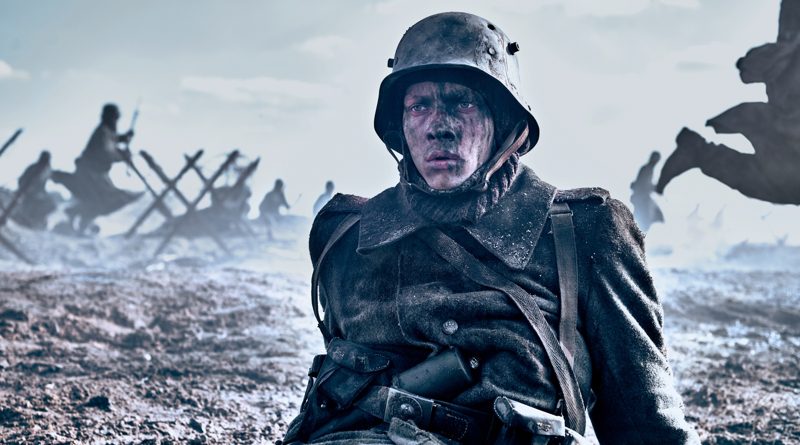Capsule Review: All Quiet on the Western Front (2022)
The familiar phrase of “calm before the storm” is best described for the third remake of All Quiet on the Western Front following the Oscar-winning 1930 black-and-white original (still the best) and the 1979 made-for-television film. This can be seen during the prologue itself, beginning with a brief moment of quietness in the opening credits before we are treated to the sight and sound of nature.
But it doesn’t take long before the movie thrusts us deep into the chaos with gunfire, explosions and soldiers scrambling along the trenches and later, charges forward into the battlefield. The latter is fluidly captured in a long take that echoes the cinematic similarity to what Sam Mendes did in 1917. Except for All Quiet on the Western Front isn’t entirely shot and seamlessly stitched together to make it entirely like a single-take film. No doubt the first 5 minutes of the movie is a masterstroke of shifting tone and contrast between the visual beauty and visceral mayhem of combat.
As the movie progresses further, there’s something about Volker Bertelmann’s score worth mentioning here. It wasn’t your garden-variety type of score typically heard in a war movie. But more of a bizarre but curiously fascinating mix of contemporary-sounding loud horns and startling drumbeats. The score actually helps to create a sense of foreboding dread as if we are watching an apocalyptic sci-fi horror of a war movie, even though All Quiet on the Western Front is a grounded World War I film.

There are three major combat sequences in this movie, with the second one taking place on a battlefield where the German soldiers facing tank assaults and enemies with flamethrowers. It was an elaborate moment that director Edward Berger doesn’t shy away from depicting graphic violence and gore, even though there is some ropey CGI included. And amidst all the chaos and casualties, Berger manages to slip in a trace of humanity and sympathy involving one dying French soldier. It was one of the best scenes in the movie that showcase Berger’s directorial prowess in injecting a genuinely emotional moment.
But such a moment is few and far between since the story — adapted from Erich Maria Remarque’s novel of the same name — is mostly hollow to the point it’s hard to care about the fate of some of the characters in this movie. This includes the lead young protagonist Paul Bäumer played by newcomer Felix Kammerer. He has that look of a naive young man but the adapted screenplay — credited to Edward Berger alongside Lesley Paterson and Ian Stokell — could only muster a cookie-cutter type of story filled with obligatory war clichés. The kind of cookie-cutter that doesn’t connect us — or at least to me — emotionally with Paul’s treacherous journey throughout the movie.
The epic 147-minute length tends to drag in places but that doesn’t mean this 2022 version of All Quiet on the Western Front is an outright failure. The aforementioned combat sequences are all impressively staged with enough verve and stark realism. And not to forget, Bertelmann’s uniquely ominous score and James Friend’s stunning cinematography.
All Quiet on the Western Front is currently streaming on Netflix.





